Safety is unquestionably a hot topic in the industry. Doing everything possible to remove risk to passengers is quite rightly a priority. But all too often the welfare of the 150,000 other people on the railway - the workforce - isn’t given the same importance.
That is now starting to change. Over the past four years, the industry’s management of the health of the rail workforce has been improving - thanks in no small part to the work of the Office of Rail and Road (ORR).
As well as regula ating safety on the network, the ORR is leading a programme that focuses on worker health. And prioritising it is more than just a moral obligation - it’s good business, too.
In its recent report Better health is happening (see Network News, page 10-11), the ORR showed that while awareness and management of health is improving, instances of worker-related ill-health and the level of respiratory diseases in rail are still high relative to some other industries.
Cue Sharon Mawhood, ORR’s HM Inspector of Railways in the Central Specialist Inspectors’ Team. Mawhood has worked on the railway for the past 12 years, and the Better Health programme has very much been her ‘baby’:
“In 2010, ORR launched what was our first health programme, which was a four-year programme up to 2014, to try and really improve our management of occupational health in the industry,” she explains.
“At that time, we did a baseline report. Where were the gaps in compliance ? What did the industry need to improve?
“We said that at the end of that first programme in 2014, we’d have another look, see what progress had been made, and identify where there were still gaps and where we still needed to improve performance.
“This report really is that look-back at the first health programme, and a forward look to provide a steer on priorities for our second health programme, which runs through to 2019.”
So what are the gaps?
“We’re not specifically focusing on individual things that companies have to do - it’s more themes. There are areas where they have built a lot of strengths, but there are still weaknesses. We’re trying to flush those out and say ‘look, we think you need to do more work in these specific areas - looking at health data, building a competence of rail managers, looking at your own management systems and using RM3 for health , and we want you to focus on these certain key priority areas’.”
What are the main health risk areas?
“Dust is a really good example. I don’t think there was any recognition within the industry until ORR’s health programme that construction dust, and ballast dust in particular, has the potential for being a real health problem.
“Before, it was ‘if the dust is so bad that you can’t actually see the machine, then we’ll do something about it!’ But now there is a real recognition that that’s not good enough, and they need to actually control the dust. You can wet the ballast and keep people out of the dusty areas. There’s been a real step change in terms of awareness and recognition of health. Beyond that, the key areas we want the industry to focus on are musculoskeletal disorders - so things like manual handling, hand-arm vibration syndrome, carcinogens such as asbestos and silica, and diesel engine fumes.”
There has been a marked increase in awareness of the problems across the industry, and some positive initiatives have been emerging that Mawhood is particularly pleased with:
“Network Rail has done a lot on ballast dust, in providing water suppression spray systems to damp down the ballast at their stockpiles. It has ordered a new ballast cleaning machine that’s going to have water sprays fitted, directly as a result of ORR pushing the silica dust agenda.
“London Underground has done some really good work on manual-handling, by doing things like putting conveyors down on the platform, rather than having guys walking downstairs onto platform level carrying huge loads.”
The ORR has collected plenty of other case studies demonstrating good practice and initiatives across the industry, and is encouraging organisations to share them through its website. Mawhood is keen that companies learn from each other, rather than ‘reinventing the wheel’ every time.
But how do problems in these areas get discovered? Are rail companies inspected for health compliance specifically?
“We tend to have a five-year overall inspection plan, so we don’t look at every aspect every year. Occupational health is built into that five-year plan for our duty holders, on topics relevant to them.
“But also, if our inspectors are out and about looking at other stuff and they see something very significant on health, they’re not going to walk past it. So it’s a mixed issue of both planned inspection on health, plus when you’re out on site and you see something that needs attention and needs fixing, and you sort it - particularly if there’s an immediate risk to health.
“An example is isocyanate paint spraying. The spray can cause asthma. We use it sometimes on rail bridges. They also use it on train carriages when they refurbish them.
“You need a really good standard of enclosure and ventilation for it to protect the worker. And full air-fed respiratory protection. If you don’t find that on an inspection, you stop the job and a prohibition notice is issued. It might not have been on the inspection plan for the day, but you’re there… you see it… you deal with it.”
By far the biggest challenge for the industry to improve workforce health is its data collection - a subject that is not exclusively reserved for health data. But Mawhood is convinced that realising a measurable improvement in occupational health is only possible if the industry is recording the data in the first place to measure against - and then it needs to report on it properly.
“They can’t report on something they can’t measure. I think one of the weaknesses in any part of the industry is that they haven’t been collecting consistent, reliable health data that they can then report.”
Mawhood says this is improving - over the past four years, more companies are publicly reporting their health data. But it is still well below reporting on safety.
“They’re quite keen to report on worker safety and passenger safety performance, but perhaps haven’t been set up to report on health because they have not actually been measuring it and monitoring it in a meaningful way.”
Do companies place more importance on the safety of passengers because of the public perception of railway safety?
“Absolutely. We’re a safety-critical industry, and until recently the focus has rightly been very much on safety-critical work. We need to rebalance it a little bit to ensure the health of the workers, which is not only causing ill-health among staff, it is costing money in terms of absence and productivity. We just need to shift the balance to get health treated equally with safety.”
However, understanding those costs is nigh impossible at the moment because of the inconsistent data collection. Currently, a guideline is the best the industry can hope for.
“We don’t have completely reliable data on the cost of work-related health, because large parts of the industry don’t actually know how much of their sickness absence is work-related. Four years on, two-thirds of the rail companies that we surveyed couldn’t distinguish work-related sickness absence from overall sickness absence.
“So we don’t have a reliable measure. But to the industry’s credit, it is very cost-sensitive, and when we mentioned this, RSSB did a really good piece of work looking at the cost of impaired health.
“It’s not just work-related, it’s the costs to the industry of people either absent from work, or being in work but not productive (presenteeism). And it looked at all sorts of costs - pensions and National Insurance contributions. It came up with an estimate of around £316 million a year across the industry, and if you include presenteeism that goes up to nearly £800m. That is an estimate - we’re not saying that it’s absolutely spot on, but it’s in that order of magnitude.”
Is the lack of a reliable measure for health data one of the reasons why organisations aren’t as a rule reporting publicly on their progress?
“No, it’s all to do with maturity. It’s to do with when they first recognise and accept that they have to improve the management of health. The first thing they do is to put policies and procedures in place at the top level - at a senior level commitment from the chief executive or MD to say ‘this is our policy and procedure on health, we want to see better health and this is how we’re going to achieve it’.
“It takes time for that intent and that commitment to filter down to the guys on the ground, in terms of what they’re actually doing. So they might have a really good policy on vibration or noise, but until that has gone through every level of management, every line manager, every supervisor, every track worker, you’re not going to see that filtering down to the ground. So it’s to do with management maturity.”
Mawhood wrote in the Better health is happening report that the “rail industry is not sufficiently mature to reliably capture data on work-related ill-health absence”. She clearly wants the industry to take notice. But how do we improve that maturity?
“We need to send that message back up to the top, saying ‘yes, you’ve stated a really high level of commitment, you’re doing all the right things, but we’re not seeing it on the ground quite like that’.
“In a huge organisation, it’s down to the people. It’s going to take some time to become the culture. Because a lot of this is a change in the way things have been done for decades. We’re saying ‘now you’ve got to wait here for protection’, ‘now you’ve got to wear a mask’, ‘you’ve got to lift using this particular technique’.”
Mawhood laughs: “What do they say? You have to give a kid food ten times before they like it. People might have to be told a hundred times, and then escalate if they don’t follow the rules. They’re going to tell them gently the first time and then a bit stronger the second time. It’s going to take quite a while for that culture to get right down to operatives. You might be saying the right things, but we’re not actually seeing the right things. We are seeing improvements on the ground, but it’s not consistent.”
This is clearly not just about health management, but also about the culture within an organisation. Mawhood says it’s also about line managers knowing “what good health looks like”. That might seem like an obvious point, but if managers have not always been looking out for the right things, it will take time before they do.
So, returning to this issue of recording data, what should the industry be doing? What does perfect look like?
“We’re keen for the industry to develop a scheme something akin to SMIS , so that there is consistent health data reporting
across the industry. But it’s not an easy
job - it’s a big task.
“SMIS is what the main line operators use to report all their safety incidents. They all report to one database, RSSB analyses all the data, and that’s what produces the industry’s overview of where the safety risks are. And they don’t have anything similar for health.”
Back again to safety-critical focus. Is this changing?
“The safety data is very much focused around catastrophic risk and train accidents, basically. But because there hadn’t been the same level of focus on occupational health, there wasn’t the same need for the industry as a whole to collect health data. I think there is now definitely an acceptance. There’s a need for it - it’s just designing something that is practical, manageable and meaningful, and these things do take time.”
So what is being done to implement a solution?
“You can’t just bolt on a health database. I was part of a working group who tried to look at this issue a couple of years ago, and it is incredibly complex in getting a uniform disease classification system - how you decide whether it’s work-related or not. So it’s not a straightforward meaning. We can’t just replicate what there is for safety exactly, because it is different, but the industry has committed on its Roadmap to build a common health data collection system. And it might just be quite simple, initially.”
Mawhood is keen for the industry not to run before it can walk:
“Let’s get something in there, and then we can build on it once we see how it works, rather than trying to put in a full Rolls-Royce system. Let’s get something with the core information that we need, and then let’s build on it.”
What should the industry take away from this latest report? Where would Mawhood most like to see progress?
“I think one of the keys is the monitoring and the assurance arrangements, checking that what they say should be happening is actually happening. I think that would be the key to driving improvements.
“It’s the training of the managers and the checking and monitoring of delivery on the ground. If they got those two things right, that would make a big difference. Because I think they know now what needs doing. The intent is there, the management system has been put in place - it’s the delivery.
“The health data will tell them where they need to focus their efforts, but in terms of delivery they need legal compliance, which is what we’re really all about. It’s getting that delivery at ground level, and I think that getting manager competence and monitoring are the two bits that are underdeveloped and really need attention.”
A key part of that monitoring is the use of RM3 for health (see panel, page 71), because it would provide a benchmarking tool for the industry.
Mawhood explains: “If we could push the message to use RM3 for health, that would be fantastic because it would allow the industry to help themselves, rather than having ORR peering over their shoulders saying ‘you’re not very good at this and you’re not very good at that!’ They can assess themselves.
“And we can use it to benchmark across industry, because you can score different elements of management systems - from being quite weak to excellent, on a rating of one to five. So we can look at a company’s progress over time, and we can also identify where the weaknesses are within an individual company, according to whether they are high-score or low-score. We can also start to look at benchmarking across the industry - across train operators. We’re not in a position to do that on health yet, but it’s coming.”
Very important question: where does the ORR sit on the RM3 benchmark? Surely the ORR health management system must be perfect?
“Of course!” laughs Mawhood. “Really, really good! Yes, we don’t have quite the same health risks as other rail organisations. But we have just signed up to the public health responsibility deal, which is a government voluntary pledge that we’re encouraging others to sign up to as well. You make a public pledge, and you have to report on it on the Department of Health website each year. It’s a visible commitment to employee health and wellbeing.
“We’re trying to lead from the front - we definitely don’t want people to say ‘you’re not doing it’!”
The ORR, and Mawhood in particular, is obviously committed to implementing a clear health agenda in the industry. Success is already happening - the Invitations To Tender for the Northern and TransPennine Express franchises included requirements for worker health and wellbeing. What the industry now needs is complete recognition that its workforce health is as important as safety.
- This feature was published in RAIL 778 on July 8 2015

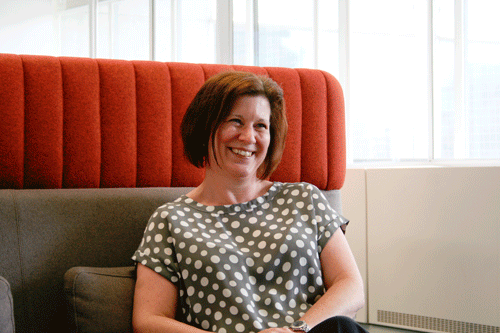
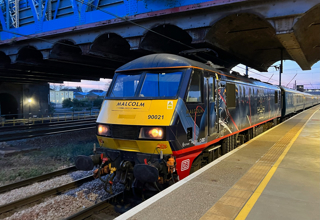
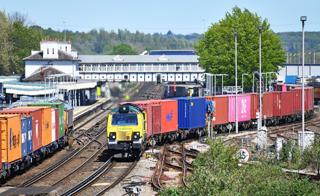
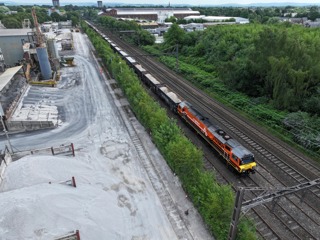
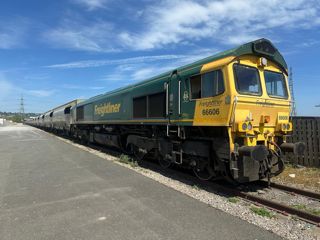
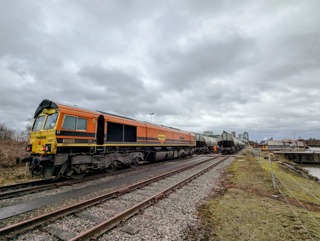


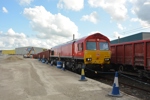







Login to comment
Comments
No comments have been made yet.